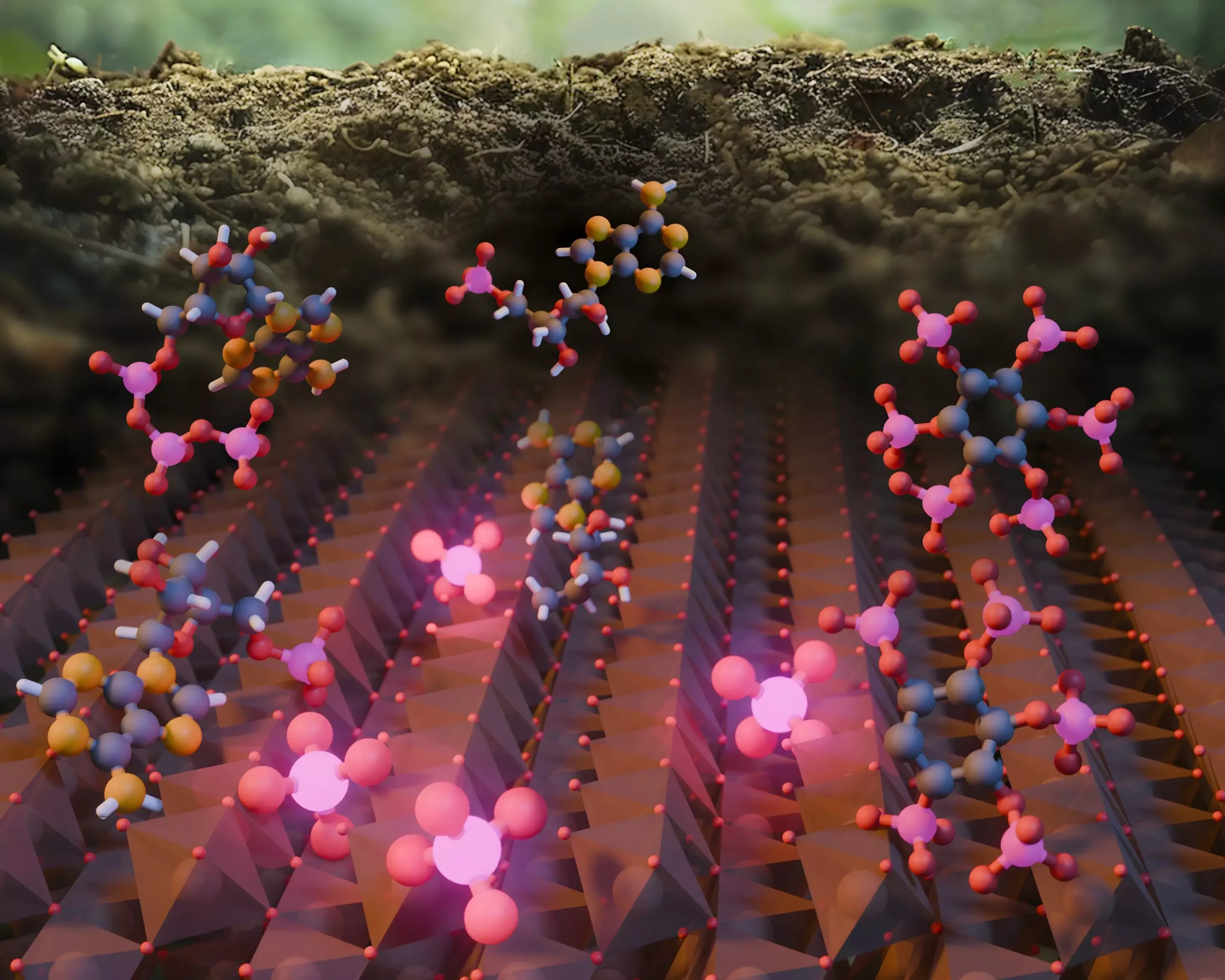Phosphorus is often heralded as a cornerstone nutrient in the realm of agriculture. As a non-negotiable ingredient in fertilizers, its importance cannot be overstated. Farmers depend on phosphorus to ensure the vitality of their crops, and, by extension, the global food supply. Yet, the intricate cycle that governs phosphorus in nature has remained a captivating enigma, ripe for scientific inquiry. Recent research led by a team from Northwestern University has unveiled a significant breakthrough in understanding this critical nutrient’s cycling process, revealing the influential role played by iron oxide minerals.
The paradox lies in the distinction between organic and inorganic phosphorus. While organic phosphorus exists abundantly in our soils, it is not bioavailable; only inorganic phosphorus can effectively fuel plant growth. The conversion of organic forms into inorganic counterparts has traditionally been attributed solely to plant and microbial enzymatic processes. However, the Northwestern study throws a proverbial wrench into that assumption, suggesting that the transformation is not solely a biological affair.
A New Perspective on Phosphorus Transformation
The researchers, spearheaded by Ludmilla Aristilde, challenged the prevailing notion that organic phosphorus must undergo enzymatic conversion for plants and microorganisms to utilize it. Instead, they discovered that iron oxide—a mineral frequently found in soils and sediments—serves as an efficient catalyst in the transformation process. This revelation is nothing short of revolutionary; it not only reshapes our understanding of phosphorus cycling but also emphasizes the multifaceted nature of ecological interactions within soil systems.
In their groundbreaking experiments, the team closely examined the fate of phosphorus within iron oxide-laden soils and sediments. This investigation revealed unexpected findings. Using advanced X-ray techniques, they revealed a hidden aspect: a significant portion of the generated inorganic phosphorus was not freely present in the solution as anticipated. It was, intriguingly, clinging to the surfaces of iron oxide particles—a fact that underscores the complex relationship between minerals and nutrient recycling.
Far-Reaching Implications for Food Security
The implications of this research extend far beyond mere academic curiosity; they resonate deeply with the pressing challenges of food security. Current agricultural practices rely heavily on phosphorus extracted from mining operations—a finite resource that experts predict may deplete within a few decades. Aristilde’s work opens new avenues for sustainable phosphorus recycling and utilization in agriculture. By embracing nature-based solutions, we can potentially safeguard our food systems while reducing reliance on diminishing mineral sources.
Moreover, understanding the intricacies of natural phosphorus recycling could lead to innovative agricultural practices. Imagine leveraging iron oxide minerals to enhance soil fertility, thereby fostering robust plant growth without excessive dependence on synthetic fertilizers. This paradigm shift not only promotes ecological health but also offers a sustainable path toward addressing the imminent threat of food shortages across the globe.
Broader Implications for Planetary Science
While this research focuses primarily on Earth, it also casts a fascinating light on extraterrestrial bodies, particularly Mars. The red planet’s surface is rich in iron oxides, the same minerals that play a pivotal role in phosphorus recycling on our planet. Understanding these processes could yield insights into the potential for life on Mars, as the ability to recycle nutrients is fundamentally tied to the sustainability of any ecosystem.
Aristilde’s team has not merely scratched the surface of soil chemistry; their work has opened up a new field of inquiry into the interplay between geology and biology. As we continue to explore other planets, the lessons learned from this study may inform our understanding of potential life-sustaining processes beyond Earth.
A Call for Reevaluation in Environmental Research
This pivotal discovery encourages a reevaluation of commonly held beliefs in environmental science. As we dig deeper into the mechanisms that govern nutrient cycling, we must remain open to the possibility that interactions between organic matter and minerals are more dynamic and reciprocal than previously understood. The implications for our understanding of ecology, agriculture, and even planetary science are profound, advocating for an interdisciplinary approach to future research.
In essence, the work at Northwestern University is a catalyst for a broader conversation about sustainability, resource management, and the interconnectedness of life on Earth. It beckons us to reconsider how we perceive the vital processes that sustain ecosystems and fosters a stronger commitment to responsible stewardship of our world. The intersection of science, agriculture, and ecological health has never been more critical, and the time to act is now.


Leave a Reply